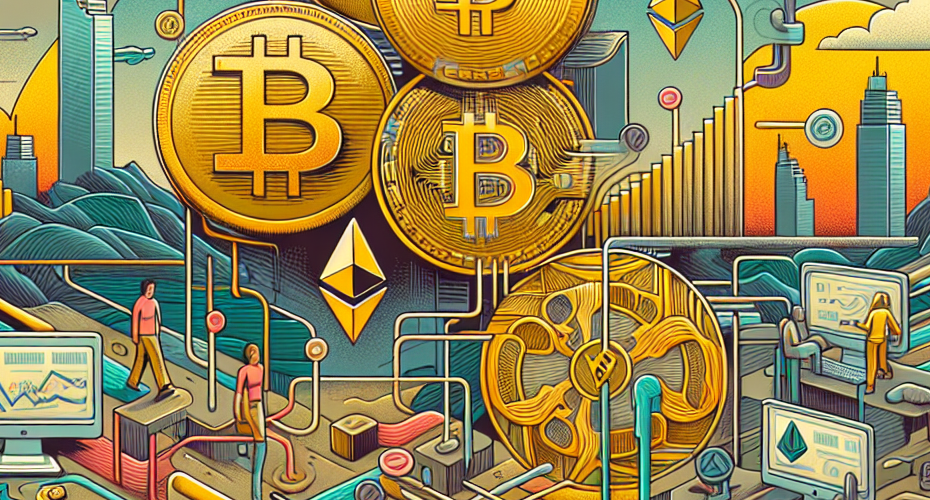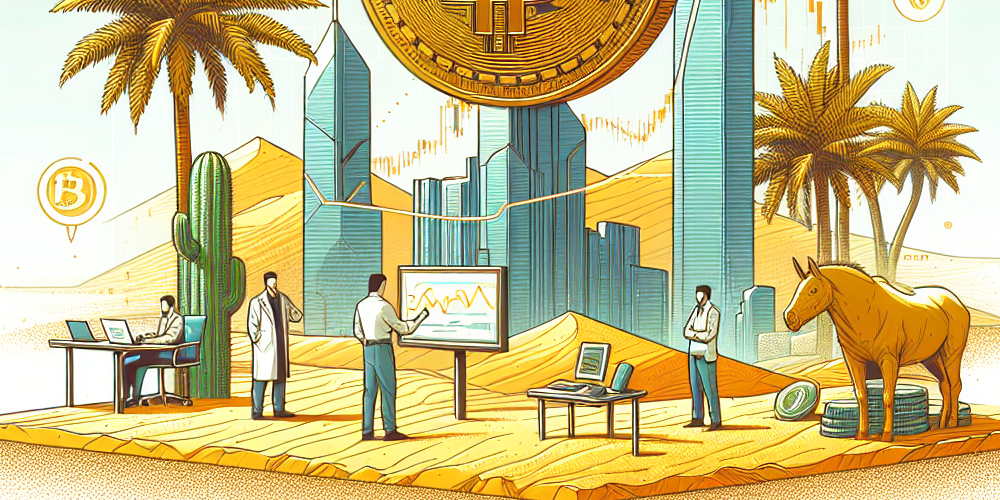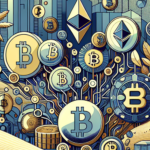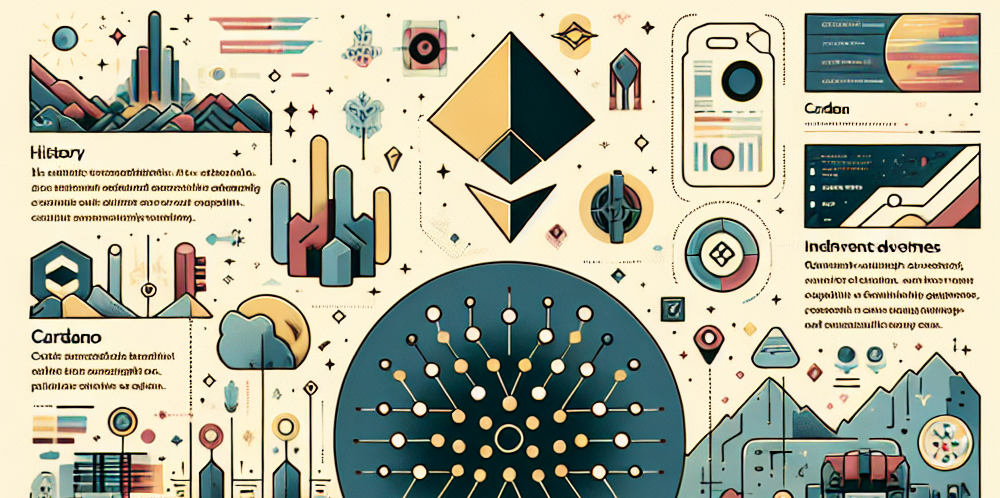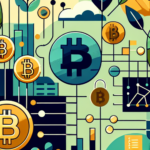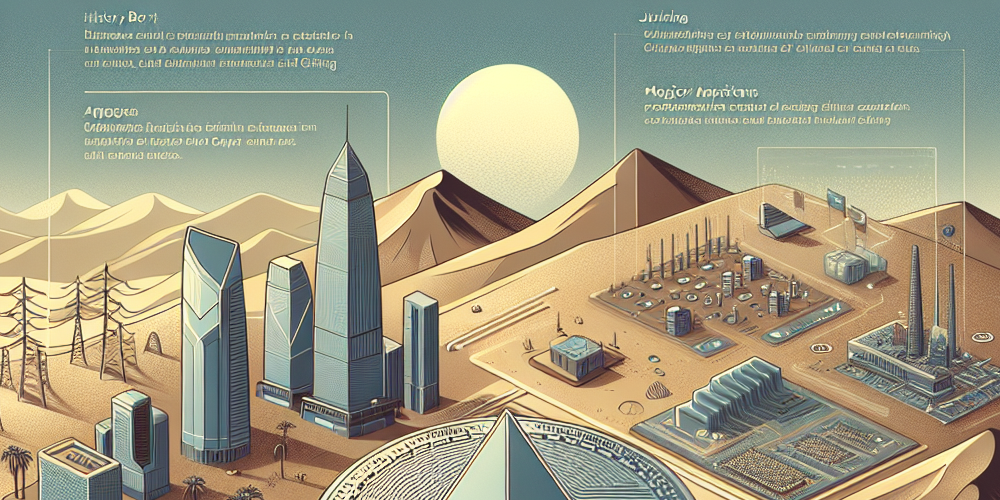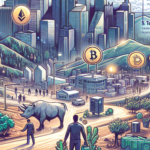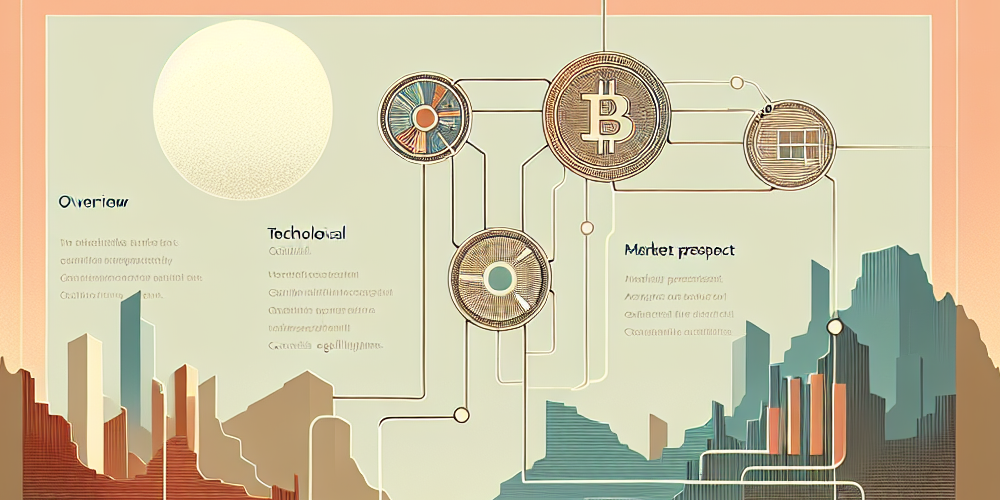As blockchain technology evolves, various standards are emerging, with BRC20 being one of the most prominent. BRC20 is an important protocol used to manage and issue tokens on blockchain networks, maximizing the efficiency and safety of digital assets. In this article, we'll take a closer look at the basic concept of BRC20, its key features, how it differs from other standards, why it's important, and how it can be utilized.
In doing so, we hope to improve your understanding of blockchain technology and provide insights into the future of digital asset management. If you are looking to gain a general knowledge of BRC20, you will find this article informative.
BRC20 Overview and Background
BRC20 is an innovative standard that has gained traction with recent advances in blockchain technology. It improves the way data is processed and stored on blockchains, allowing for more efficient and secure systems.
Definition and purpose of BRC20
BRC20 is a standard that defines the data formats and processing methods used by certain blockchain protocols.
The main purpose of this standard is to increase interoperability between various blockchain networks.
It also enhances the transparency and safety of data to build a more trusted blockchain ecosystem.
Background
Traditional blockchain technology has had a number of problems. These include lack of scalability, low processing speed, and security vulnerabilities.
To address these issues, developers realized the need for a new standard, and BRC20 was born.
BRC20 is an effort to overcome the limitations of existing technologies, and offers a more efficient and secure way of handling data.
Key Features
Interoperability: BRC20 facilitates the exchange of data between different blockchain networks.
Enhanced security: Increase the integrity and security of your data through standardized protocols.
Increase efficiency: Improve the speed of data processing and efficient utilization of system resources.
To summarize, BRC20 aims to address many of the challenges facing modern blockchain technology and provide better performance and reliability. This is expected to open up a wider range of applications for blockchain technology.
Key Features of the BRC20
BRC20 is an important standard that represents an innovation in blockchain technology. The following describes the key features of BRC20.
Scalability and interoperability
BRC20 is highly scalable. It can process a large number of transactions quickly and works seamlessly with a variety of blockchain networks. This is due to a number of factors, including
- Multichain support: Support for multiple blockchain platforms to provide users with more flexible choices.
- Fast processing speeds: Highly efficient, enabling fast transaction processing.
Stability and security
Two of the most important factors in blockchain technology are stability and security. BRC20 strengthens these factors in the following ways
- Encryption technology: We use the latest encryption techniques to ensure the safety of your data.
- Distributed Ledger: Manage transaction records transparently and securely through distributed ledger technology.
User-friendliness
The BRC20 is designed with user experience in mind, making it easy for users to access and utilize:
- Easy integration: Easy integration with a wide range of applications.
- User-friendly interface: Provides an intuitive interface, making it easy for users to use.
These are the key features that position BRC20 as the next generation blockchain standard.
Difference between BRC20 and ERC20
BRC20 and ERC20 are token standards used by different blockchain networks, and understanding the differences between them is one of the key factors in utilizing blockchain technology.
Basic concepts and purpose
- BRC20: A token standard that works on the Bitcoin network. It is primarily used for projects that want to utilize Bitcoin's security and network effects.
- ERC20: A token standard that operates on the Ethereum network, with the primary purpose of enabling DApp development and smart contract execution.
Network and compatibility
- BRC20: Based on Bitcoin's Proof of Work algorithm, it provides a high level of security. However, it has limitations in handling large transactions due to scalability issues.
- ERC20: Ethereum's smart contract capabilities enable compatibility with a wide range of dApps. Scalability issues are also being addressed with the Ethereum 2.0 upgrade.
Technical features
Deployment and management:
- BRC20: Creates and manages tokens using Bitcoin scripts. This can be somewhat complex, but provides strong security.
- ERC20: Provides a simple interface and a wide range of libraries to easily deploy and manage tokens.
Cost and efficiency:
- BRC20: Transaction fees are relatively low, but costs can increase during network congestion.
- ERC20: You have to pay for gas, which can be very expensive when the network is congested.
As you can see, BRC20 and ERC20 each have their own advantages and disadvantages, and it's important to choose the appropriate standard based on your project's objectives and requirements.
How to issue and manage BRC20 tokens
Minting and managing BRC20 tokens is an important step in understanding and practicing blockchain technology. In this section, we'll explain how you can mint BRC20 tokens and manage them effectively.
Preparing to issue tokens
Before you can mint BRC20 tokens, you need to do some preparation. Here are the main preparations
- Review technical requirements**:
- Development environment settings (e.g., Node.js, Solidity, etc.)
- Basic knowledge of smart contracts
- Define your goals and objectives:
- Establish the purpose and functionality of your token
- Determine use cases (e.g., payments, reward systems, etc.)
Writing smart contracts
Smart contracts are at the heart of the BRC20 token issuance. Here are a few things to keep in mind when writing smart contracts:
- **Create a basic structure**:
- Define token names, symbols, decimal places, etc.
- Set the total supply of tokens
- Implement required functions**:
- transfer()`: token transfer function
- balanceOf()`: Get balance for a specific address
- approve()`, `transferFrom()`: Approval and proxy transfer functions
| Item | Description. |
|---|---|
| Token name | The official name of the token |
| Token symbols | Abbreviations used by exchanges and wallets |
| Total supply | Maximum number of tokens to be issued |
Distribute and manage tokens
Token distribution needs to be fair to multiple stakeholders and requires ongoing management:
- Create a token deployment plan**:
- How to run an airdrop
- Distribution to early investors and teams
- Ongoing monitoring and updates:
- Security checks and vulnerability remediation
- Engage with your community and listen to their feedback
- Legal compliance**:
- Comply with local regulations and legal requirements
- Implement know-your-customer (KYC) and anti-money laundering (AML) procedures
Advantages and disadvantages of the BRC20
The BRC20 standard opens up new possibilities for blockchain technology, but like all technologies, it has its advantages and disadvantages. In this section, we'll explore the main advantages and disadvantages of BRC20.
Key benefits of the BRC20
The BRC20 offers great benefits in many ways. Below are a few of them:
- Interoperability**:
- BRC20 tokens are easy to transfer and exchange within the same blockchain ecosystem.
- Compatibility with other blockchain standards makes it even more versatile.
- Scalability:
- It has the structure to scale the transaction processing power of the network, allowing it to accommodate more users and applications.
- Safety and reliability:
- The inherent nature of blockchain provides a high level of security.
- Gain transparency and trust from automated execution of smart contracts.
Major drawbacks of the BRC20
Of course, the BRC20 standard has its limitations. Here are some of its shortcomings
- Increased complexity**:
- Because it's based on smart contracts, it can be complex to set up and manage initially.
- This increases the amount of knowledge that developers and users need to learn.
- Cost concerns:
- Network gas fees can be high, which can be burdensome for large-scale service operations.
- Initial development and deployment costs can also be significant.
- Regulatory issues:
- Legal and regulatory issues in various countries may be unresolved, limiting global commercialization.
Real-world examples and applications
The BRC20 standard is already being experimented with in a number of areas, some of which include
- Financial Services**:
- It is used for issuing and trading tokens on decentralized finance (DeFi) platforms.
- The **gaming industry**:
- Used for digital asset management for proving ownership and exchanging game items.
- Supply Chain Management**:
- It can help you transparently track the origin and distribution of your products.
The many benefits of the BRC20 standard and real-world examples of its use are likely to continue to evolve in the years to come, but its drawbacks should be considered and approached with caution.
BRC20 Ecosystem and Applications
The BRC20 ecosystem demonstrates the innovative use of blockchain technology through a variety of applications. This section introduces the components of the ecosystem and key applications based on the BRC20 standard.
Key components of the BRC20 ecosystem
Issuing and trading tokens:** **Token issuance and transactions
The BRC20 standard makes it easy to issue a wide variety of tokens, and there's a lot of trading using it.
Issued tokens primarily represent ownership of digital assets, in-game items, and other digital content.
Smart contracts:** ・**Smart contracts
BRC20 supports smart contract functionality, which is critical for developing and running decentralized applications (DApps).
This enables a wide range of financial services, including automated transactions, conditional payments, and more.
Wallets and payment systems:** ・**Wallets and payment systems:** ・**Wallets and payment systems
BRC20-compliant wallets are widely used for secure storage and easy transfers.
These wallets allow users to make fast and secure payments.
Applications: Digital asset management
NFT Marketplace:** ・**NFT Marketplace:** ・**NFT Marketplace
We have an active non-fungible token (NFT) marketplace based on the BRC20 standard.
A wide range of digital content is being traded in the form of NFTs, including artwork, music, videos, and more,
This opens up new revenue models for creators.
Gaming Industry:** ・**Gaming Industry
We're seeing an increase in the number of people trading in-game items or characters for BRC20 tokens.
Players can freely buy and sell items they've earned, expanding the game experience.
Decentralized Finance (DeFi):** **Decentralized Finance (DeFi):**
Decentralized financial services using the BRC20 standard are also actively operating.
It supports financial activities such as lending, deposits, and investments in a decentralized way, increasing trust.
BRC20 in Real Life
Public Services:** ・**Public Services
Some public organizations are adopting BRC20-based blockchain technology to implement systems such as identity verification, voting, and more.
This continues our efforts to increase transparency and security.
Logistics & Supply Chain Management:** **Logistics and Supply Chain Management
BRC20 is also being utilized in logistics and supply chain management.
Track the movement and status of your products in real time to provide reliable information.
Healthcare:** ・**Healthcare
The BRC20 standard is being applied to securely manage and share healthcare data.
Preventing data tampering and improving accessibility benefits patients and providers alike.
As such, the BRC20 ecosystem is demonstrating the value of the technology through innovative applications in a variety of sectors.
Future Prospects for BRC20
The future of BRC20 has endless possibilities as the technology evolves. This standard has the potential to significantly change the blockchain ecosystem going forward and is expected to be utilized in a variety of industries.
Technical scalability
The BRC20 standard is highly scalable compared to existing blockchain technologies. It can handle complex smart contracts more efficiently, which makes it powerful for a wide range of applications.
- Higher transaction processing speeds: Designed to process more transactions per second.
- Low fee structure: Minimize transaction fees to provide economic benefits to users.
Applicability across industries
BRC20 can be applied in a wide range of industries. It is expected to revolutionize finance, logistics, healthcare, and more.
- The **financial sector**: Building secure and transparent trading systems
- Logistics Management: Increase efficiency with real-time tracking and management
- Medical Records: Enhance the security and accessibility of patient data
Advancing the community and ecosystem
For BRC20 to be successful, we need a vibrant community and a robust ecosystem. Developers, enterprises, and users will work together to create an environment that continues to grow.
- Developer Assistance Program: Provides support for new ideas and projects
- Enterprise partnerships: Expand your use cases by collaborating with a variety of companies
- User education and outreach: educate and engage the general public about the benefits of the technology
With these characteristics and prospects, BRC20 is likely to become a central pillar of blockchain technology in the future.
